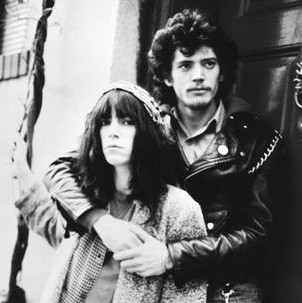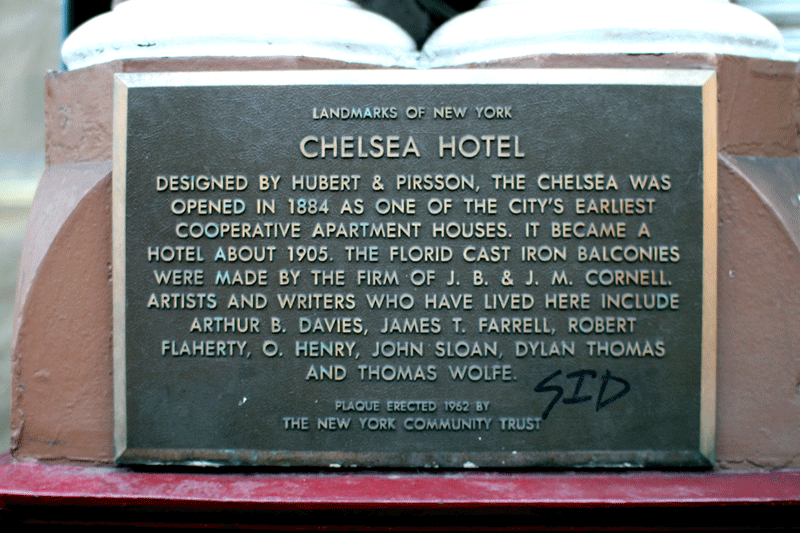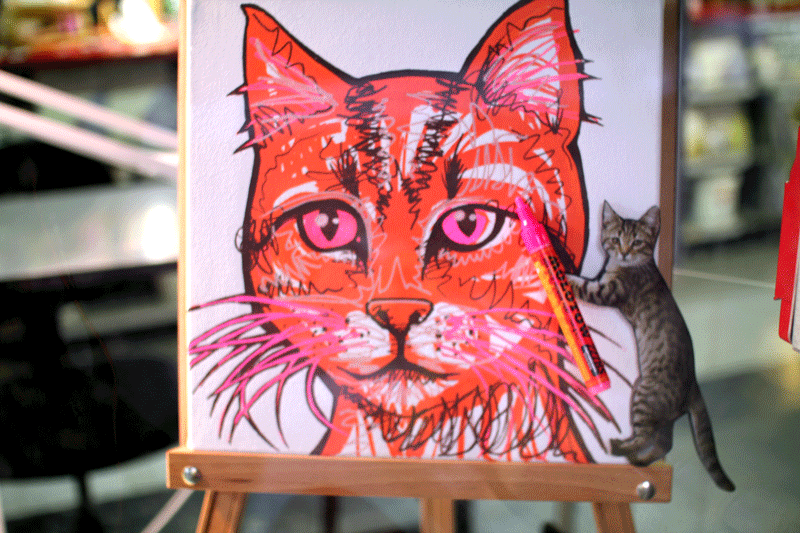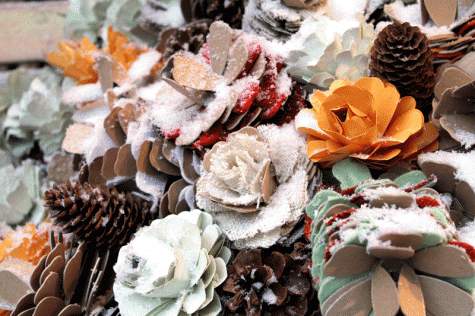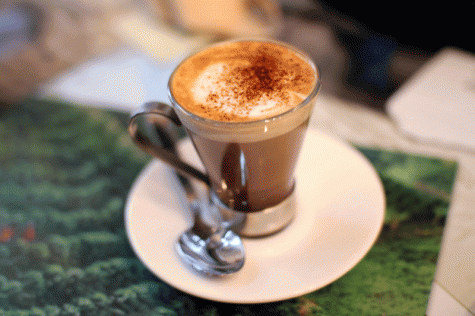I blame Patti Smith. Not for her music, because I have to confess I’ve never been the biggest fan. No, I blame her for her book, “Just Kids,” in which she writes about her enduring friendship with Robert Mapplethorpe, leading up to his death from AIDS in 1989. Though the prose is often a bit flowery and dramatic for my taste, there remains at the book’s center this passion, this certainty that life is to be lived for art.
Maybe it’s a largely youthful exuberance, the luxury of a certain age, but as I read the book I found myself wistfully remembering my own late teens and early twenties, when it did seem like art was everything. Or, if not everything, then something large and looming and ever-present, something to be discussed and worshipped and debated.
I’ve wanted to be a writer since I was 13, but there was a time – shortly before I went to college – when I also wanted to be an art historian. I loved, loved, loved museums. I loved paintings and sculptures. I wanted to surround myself with art for the rest of my life, tell its stories, help other people understand context and what the artists were trying to achieve.
Some of my earliest memories are of spending rainy days lying on the floor in my parents’ living room in Glasgow, leafing through enormous art tomes, poring over glossy color plates, tracing the figures with my fingers. More often than not, I had no idea what the pictures were all about – but I knew they were magically able to make me feel something – sometimes contentment, occasionally fear and confusion. I understood early on that art was important and it was powerful.
My parents surrounded us with art in a number of forms. We took frequent trips to museums, both in our own town and while on holiday. My father worked in the world of opera and our house was frequently filled with singers, musicians, conductors, directors, loud and rowdy, celebrating music and theater. We understood the performing arts to be like other art forms – essential, fragile and threatened by a world increasingly unwilling to keep funding their pursuit.
As I grew older I was drawn, in particular, to the work of the Impressionists, which I feel a bit sheepish admitting. Because while today it’s probably the safest form of art imaginable – the stuff of waiting rooms and souvenir mugs and posters for children’s bedrooms – what actually drew me to the movement initially was the fact that it began as a complete and total rebellion. The soft focus and irreverent lines – which today seem soft and benign – were considered at the time a terrible insult to the previous generations’ insistence on realism in perspective, lighting and form.
The Impressionists basically said, “Screw that” and instead sought to capture an instant of light. A glimpse. An impression of a single moment in all its fuzzy glory. And something about that, believe it or not, felt so…rock ‘n roll to me. Even if you scoff at the Impressionists today, it’s impossible to ignore that their rebellion was as crucial to the evolution of all art to follow – from Picasso to Warhol to Koons to, yes, even to Mapplethorpe – as any other movement has been.
But I digress. I mean, I really digress. (Thank you for indulging me.) My point is that thinking about all of this made me really nostalgic for a time in my life when art was a really central passion, when I surrounded myself with it and talked about it and thought about it. It was like suddenly realizing I’d left some part of myself at the airport, years ago. I wanted to get it back, if only to some degree and if only for a short time.
Seven days, to be precise.
So that was the goal as I, coincidentally, headed to New York for a handful of days: to find art every day. To experience it and think about it. And where else would be better to do so than in the Big Apple, surrounded by some of the world’s greatest museums, not to mention the galleries and public art? Talk about a breeze!
As we know, however, these things are never as easy as I imagine. I feel like every week I sit down to write my blog entry and wind up making some excuse about how this ailment or that ailment prevented me from fully pursuing this week’s change. (I’m actually beginning to think I might be jinxed, in which case I blame my husband, who has rampant disregard for the power of jinx.) Well, this week was no different. At some point upon arriving in New York – somewhere between the airport and our hotel – I wrenched the hell out of my left knee.
It was, as the kids say, a game-changer. Walking easily was a key element of my master plan. While I’d taken it for granted that I could head out of our hotel in Midtown and hoof it up Central Park East to the Met – or even just a few short blocks to MOMA – walking was excruciating. Stairs were out of the question. Even if I got to a museum, the idea of wandering around for hours just sounded like punishment.
But just maybe, I thought, this could be better in a way. Perhaps the big museums were a cop out. Perhaps my injury would force me to find and consider art within even tighter constraints. Like, on the first day, within my hotel. Yes, that’s right. I started off considering hotel art, which is, to many, an oxymoron.
We were, fortunately, at a nicer hotel, so it wasn’t like I was staring at a basket of fruit purchased for $20 at an airport hotel art sale. There was an abstract painting of some sort hanging above our bed, big slashes of red and grey and brown – possibly representative of how my knee felt. There were twin black-and-white photographs of the building of the Eiffel Tower and the Chrysler Building. In the elevators were murals of the Arc de Triomphe and the Empire State Building. (Our hotel is French-owned, in case you hadn’t guessed.) The lobby was even attached to a gallery featuring the work of a single artist who seemed terribly fond of red-clad dancing ladies.
All of it earned the same reaction from me, by and large: huh.
So maybe what I needed was public art. Art for the people, yo! Nothing like the idea of bringing the goods to the prole to really stir up a little passion! So on day two, I set my sights on a very tight perimeter around our hotel, hobbling around looking to be dazzled. Sure enough , it’s hard to go a block in Midtown without running into some kind of sculpture.
In fact, it seems to be practically a requirement for every office building to try to offset their worship of commerce with a really big, really expensive sculpture. There were strange shapes, busts, headless torsos. None of them, unfortunately, really did anything for me. Nor for the people dashing past them, apparently. At that point, this wasn’t art so much as it was an extension of the building.
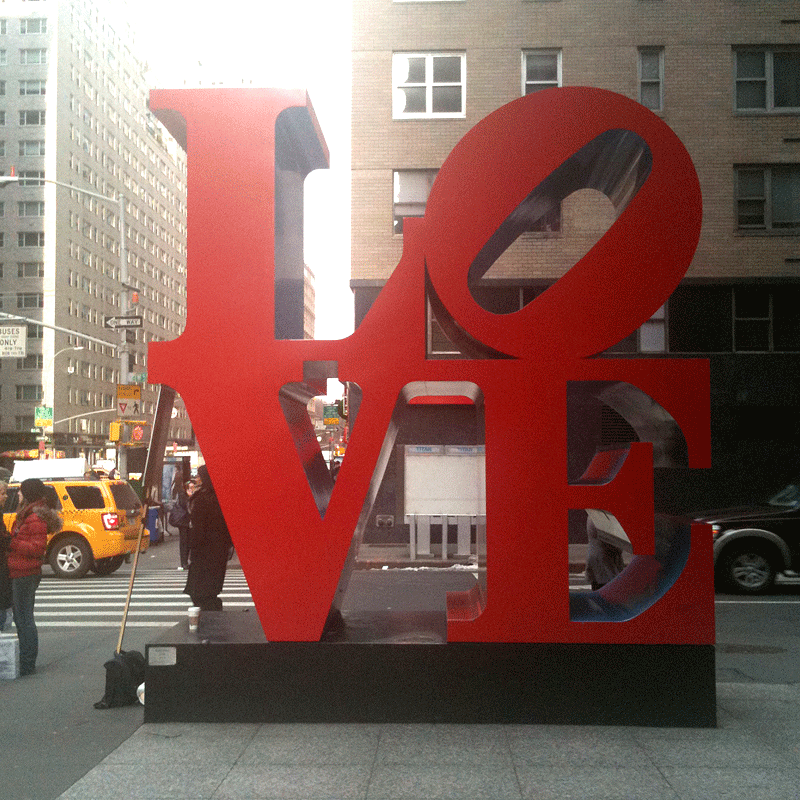 The only sculpture I saw people stop and take notice of was Robert Indiana’s LOVE sculpture at the corner of 6th Avenue and West 55th. Yet I somehow doubted that those cute couples were posing in front of it because they knew it was an iconic piece of pop art from the seventies. Perhaps I’m just being cynical. My own reaction to seeing it – and I should confess, I’ve seen it before – was that I kind of like it better on a stamp. Seriously. That was my reaction.
The only sculpture I saw people stop and take notice of was Robert Indiana’s LOVE sculpture at the corner of 6th Avenue and West 55th. Yet I somehow doubted that those cute couples were posing in front of it because they knew it was an iconic piece of pop art from the seventies. Perhaps I’m just being cynical. My own reaction to seeing it – and I should confess, I’ve seen it before – was that I kind of like it better on a stamp. Seriously. That was my reaction.
I started to wonder if maybe I was art-broken.
Back in the hotel that night, finishing “Just Kids,” I got it in my head that if I went to the source where artists dwelled, then I’d magically be infused with passion – and surely stumble upon art at its core. Taking a cue from my book, which had started all this nonsense in the first place, the next day I hobbled my way down West 23rd street to the gigantic, domineering Hotel Chelsea.
I’d never actually been to the hotel before, although I knew well its connection to some of the great works of literature and art – countless of big names passed through the doors and wandered its halls in pursuit of their own passions. In “Just Kids,” the hotel itself is an artistic force and the tiny room Patti Smith and Robert Mapplethorpe share is central to their commitment to a life pursuing art. I figured creativity would be vibrating from its red brick façade.
Alas, no. It was cold and grey and my leg was throbbing. There was no way this giant structure could live up to my fantasies. I glimpsed into the brightly-lit lobby, walls covered with, well, you guessed it – art – but somehow couldn’t bring myself to step inside. There was too much expectation. I was too tired. Maybe there was something to the theory that this was a young person’s game.
Defeated, I crossed the road to try to get a better picture of the hotel, something that would capture its sheer size and found myself in front of an art supply store. In the corner of the display window, I saw this:
And it made me laugh. Absurd, nonsensical and totally hilarious. Hands down, the biggest reaction I’d had to any “art” the entire trip. Maybe because I wasn’t expecting anything, maybe because it caught me unawares or maybe because I’ve become an idiot who laughs at cat drawings. Either way, it was what it was.
I won’t bore you with the moment-by-moment details of every attempt I made to seek out art in the following days, but I will tell you it wasn’t as easy as I thought, nor was it as meaningful as I had hoped. Yes, I found art in a lot of places. I looked at it and I tried really hard to feel something, but mostly I just felt like I was checking some box on a To Do list.
 That said, my biggest A-HA moment came when I was back home, uploading and editing the pictures from my trip. Browsing through the images I’d chosen to take, it started to dawn on me that I’d been seeing and responding to art the entire trip. It’s just that the kind of art that I find myself drawn to today, naturally and without effort, isn’t the same as it was twenty years ago.
That said, my biggest A-HA moment came when I was back home, uploading and editing the pictures from my trip. Browsing through the images I’d chosen to take, it started to dawn on me that I’d been seeing and responding to art the entire trip. It’s just that the kind of art that I find myself drawn to today, naturally and without effort, isn’t the same as it was twenty years ago.
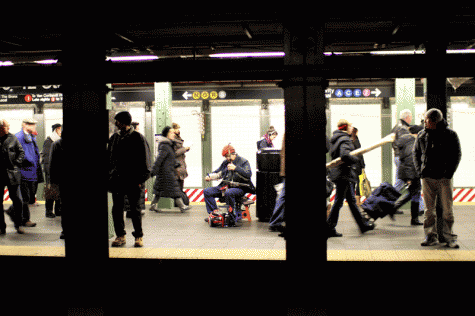 Today, I’m stopped in my tracks by stunning skyscrapers or old buildings with ornate touches. I love decades-old tile work in the subway or glittering patterns on the ceiling of an Art Deco hall in Brooklyn. I’m moved by the sweetness of a pile of vintage valentines for sale at a flea market or hand-crafted fabric pine cones in a store window display. A quick flash of the Theater District lights as we fly by in a taxi or the perfect espresso in a beautiful glass cup. A photo of tacos, with the depth-of-field just right or a musician playing across the platform in the underground.
Today, I’m stopped in my tracks by stunning skyscrapers or old buildings with ornate touches. I love decades-old tile work in the subway or glittering patterns on the ceiling of an Art Deco hall in Brooklyn. I’m moved by the sweetness of a pile of vintage valentines for sale at a flea market or hand-crafted fabric pine cones in a store window display. A quick flash of the Theater District lights as we fly by in a taxi or the perfect espresso in a beautiful glass cup. A photo of tacos, with the depth-of-field just right or a musician playing across the platform in the underground.
I realize I like art – and that’s art with a small “a” – when I’m participating in it somehow, trying to take the perfect shot or looking up to notice something unusual I might have otherwise passed by entirely. I’m not so much a “museum and painting” gal these days as I am a “pretty things in my real life” gal. Those are the things that bring me, if not a sense of passion and stirring, then a deep sense of contentment and happiness.
I still have and experience art in my everyday life, although the college-aged me would probably scoff at my definitions, dismissing them as middle-aged ennui and a surrender to the bourgeoisie. Strangely, I’m okay with that. It’s possible she was right. It’s also possible she was kind of a pain in the ass.
